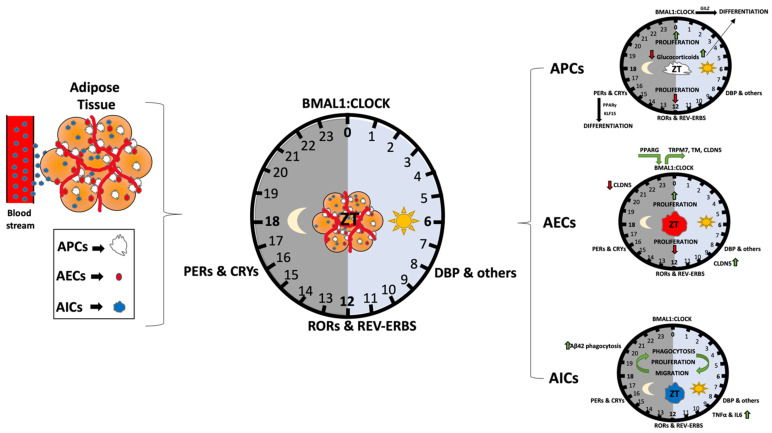Figure 2.
Circadian regulation of adipose tissue and its resident cells. Adipose tissue composition includes mature adipocytes (yellow), and cells of the stromal vascular fraction (SVF), which include immune cells (AIC), endothelial cells (AEC) as well as adipocyte progenitor cells (APCs), which can undergo adipogenesis to become mature adipocytes. Collectively, these cells are controlled in part by circulating factors that access adipose tissue via the vasculature (left). Specific circadian cues known to be important for adipose tissue biology include glucocorticoids and PPARγ (which regulate pre-adipocyte differentiation), as well as clock genes themselves, which can control proliferation and function of specific SVF cells through regulation of CLOCK:BMAL1-target genes (right). The BMAL1-target gene CLDN5, a tight function protein expressed in endothelial and epithelial cells, is known to be rhythmic and important for some microvascular function. In addition to immune cell regulation by clock genes, the proinflammatory cytokines, TNFα and IL6, are also clock-controlled, and can modulate the activity of immune cells such as macrophages.

